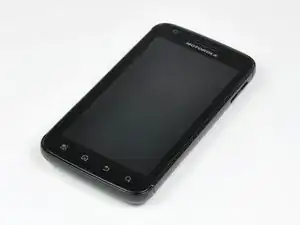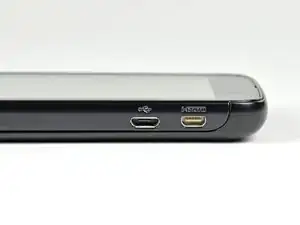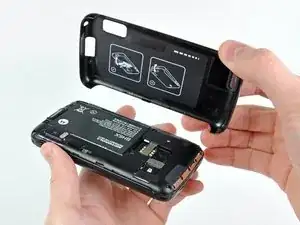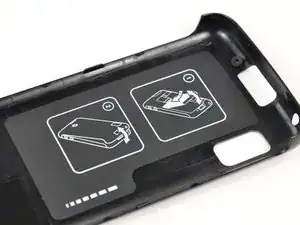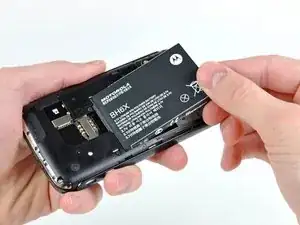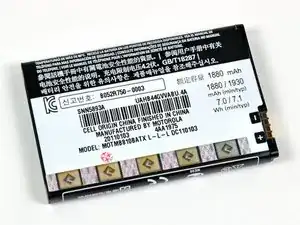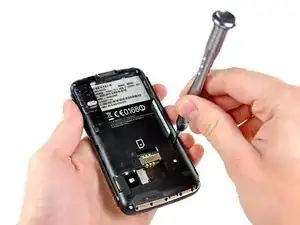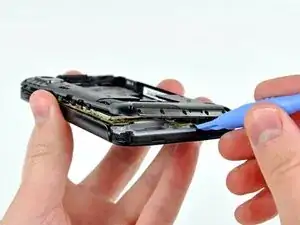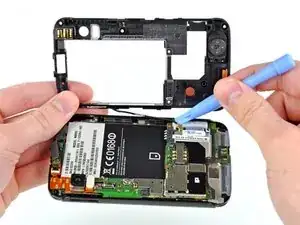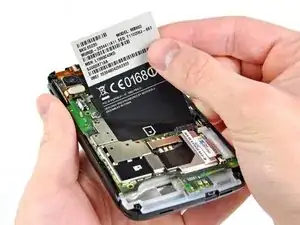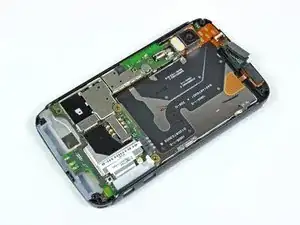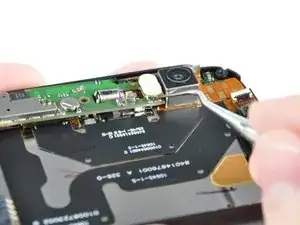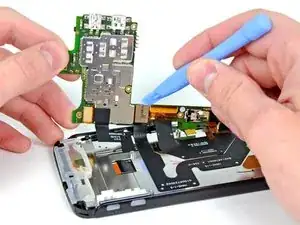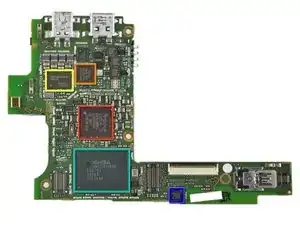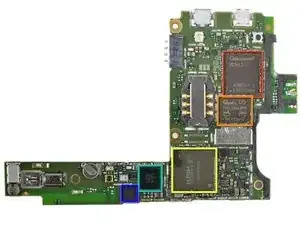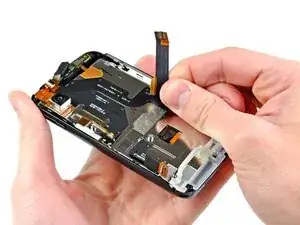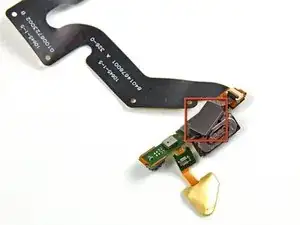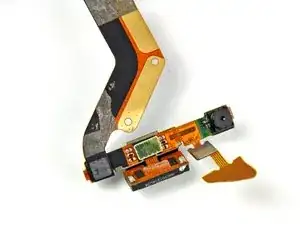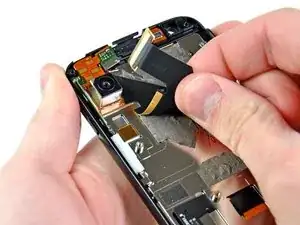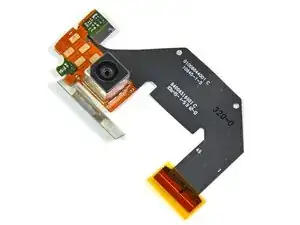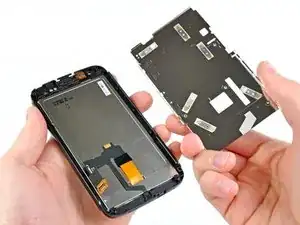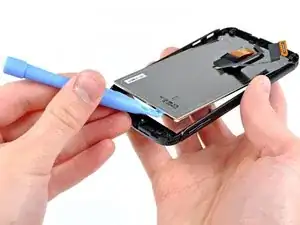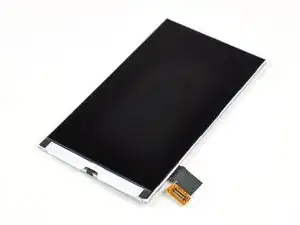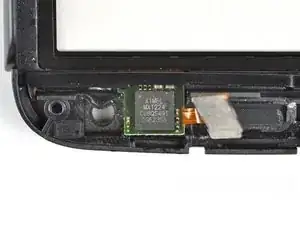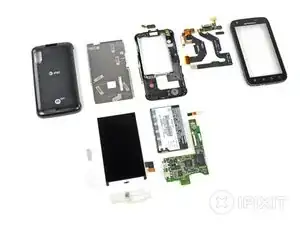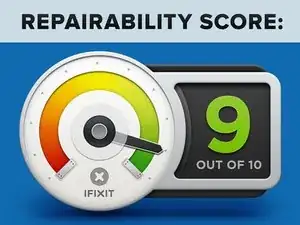Einleitung
Join us today as we disassemble Motorola's newest piece of gadgetry: the Atrix 4G.
Equipped with an Nvidia Tegra 2 housing a dual-core 1 GHz Cortex A9 processor and an 8-core ULP GPU, the Atrix 4G is set to dominate the world of mobile entertainment. Will the hardware of this monster live up to the hype? Read on to find out.
Werkzeuge
-
-
Currently the most powerful smartphone on the market, the Atrix boasts some impressive technical specs:
-
1 GHz Cortex-A9 Dual-Core [!] Processor
-
8 core ULP (ultra-low power) GeForce GPU
-
4" qHD (Quarter High Definition) Display (960x540) protected by a Gorilla Glass front panel
-
16 GB onboard memory, with up to 32 GB SD storage
-
1 GB DDR2 RAM
-
5 MP Rear-facing camera with 720p video capture and VGA Front-facing camera
-
-
-
Aside from a sleek carbon fiber finish, the back of the phone reminds you who made the phone, whose network you are calling on, and what quality video you can shoot.
-
Sorry to disappoint, but it is not actually carbon fiber. Instead it is plastic with a carbon fiber pattern. One of these days...
-
One of the most highly touted features of the Atrix is its connectivity. This is accomplished through side-by-side micro USB and micro HDMI ports.
-
-
-
The Atrix' back cover comes off easily, providing access to the user-serviceable battery and the microSD card slot.
-
There's also instructions on the inside of the back cover showing how to remove the battery and reconnect the cover.
-
-
-
We liked those directions, so we decided to follow them. Lo and behold, the battery came out very easily!
-
The 34.7 gram, 1930 mAh Li-Ion battery will provide up to 530 minutes of talk time on GSM, and up to 540 minutes on WCDMA.
-
-
-
Exposing the innards of the phone proves to be a simple process. We are inhibited only by a few T5 Torx screws and some plastic clips.
-
-
-
An antenna is mounted in the rear half of the phone and must be disconnected before further disassembly.
-
-
-
This sticker comes off quite easily. Motorola used an adhesive that would allow the sticker to be re-sealed after being taken off. That's great if you have to dig underneath the sticker to fix something!
-
-
-
The LED flash unit is held in place by a set of small metal clips.
-
Disconnecting the last few cables allows us to remove the motherboard from its comfy home...
-
-
-
The back of the board houses:
-
Qualcomm MDM6200 supporting HSPA+ speeds of up to 14.4 Mbps
-
Hynix H8BCSOQG0MMR 2-chip memory MCP
-
Elpida B8132B1PB. According to Chipworks, the Elpida package contains 1 GB DDR2 RAM, but also covers the Nvidia Tegra 2 CPU/GPU residing underneath the package.
-
Broadcom BCM4329 802.11n Wi-Fi, Bluetooth 2.1, and FM Tuner
-
AKM 8975 Electronic Compass
-
-
-
Next, the first of the two complex ribbon cables can be peeled off the steel mid-plane.
-
This cable houses the front camera, earpiece speaker, power button assembly, and top microphone. How's that for integration?
-
For enhanced security, the power button has a capacitive fingerprint scanner that can verify your identity from a single swipe of a finger.
-
-
-
We can also remove the rear camera assembly and its cable.
-
One cable to rule them all: the rear camera, proximity sensor, ambient light sensor, pressure contacts for the headphone jack, and side volume buttons all come out as one piece.
-
What a decade can do for cables. Check out the thickness of a Parallel ATA cable compared to the Atrix camera cable. The PATA cable is 0.66 mm thick, while Atrix' camera cable measures 0.17 mm! And they're routing several components through the same cable!
-
-
-
To remove the metal plate behind the LCD, simply lift its top edge slightly while pushing it toward the top of the phone.
-
After releasing it from its retaining clips, the LCD is readily accessible.
-
-
-
And just like that, the LCD can be lifted from the glass front panel.
-
Huzzah! -- the LCD is not glued to the front panel glass!
-
The roughly 80% (this number is a rough estimate and is a calculation deemed accurate by the iFixit statistical department) of people who drop their Atrix now won't have to spend their money on replacing a fully functional LCD in addition to their broken glass!
-
The 960x480 qHD PenTile LCD is aptly named because it is the size of one quarter of a 1080p panel.
-
The front panel houses an Atmel mXT224 touchscreen controller underneath the LCD connector. It's the same chip we've found on the Samsung Galaxy Tab, Nexus S, and HTC Evo 4G.
-
-
-
Motorola Atrix 4G Repairability Score: 9 out of 10 (10 is easiest to repair)
-
The LCD is separable from the glass front panel, making them independently replaceable.
-
The phone is held together with a limited number of screws and plastic clips. Adhesive is minimally used in its construction.
-
The battery can be removed in seconds.
-
-
The phone feels solid in the hand, but the plastic rear panel is a little chintzy (that's right, chintzy).
-
The two main ribbon cables are soldered to many components (cameras, proximity sensors, etc.), making the cables costly to replace.
-
3 Kommentare
ST-ERICSSON CPCAP 2.2TC22 is a 4G Modem (the only available on the market today). Qualcomm Modem used in this phone is only to support CDMA (even if it also supports HSDA, it is not used in this way)
John -
Any indication where the liquid detectors are?
I believe there is one on the back of the battery, and there might be one (that white spot) next to the sim card slot.
Taylor -
thanks for info
im from zancko mobile repair training
zancko -
